Disclosure: This article contains affiliate links. We may earn a commission from purchases at no extra cost to you, which helps our travel content.
Standing amid the autumn-gilded vineyards of Saint-Émilion, watching the morning mist retreat across rows of Merlot vines, I was reminded why Bordeaux has captivated wine enthusiasts for centuries. The region's terroir tells a story that began long before our modern understanding of viticulture—not unlike the prehistoric cave paintings that first drew me to southern France decades ago. There's something profoundly moving about witnessing traditions that have evolved over generations yet remain rooted in the limestone-rich soil beneath your feet. After numerous visits spanning my career as both educator and traveler, I've curated this guide to help couples navigate Bordeaux's wine country with the same appreciation for artistry and heritage that continues to draw me back each fall. From grand châteaux whose names evoke reverence among collectors to family-owned cellars where innovation quietly flourishes, Bordeaux offers an unparalleled journey through the cultural and sensory landscape of wine.
The Left and Right Banks: Understanding Bordeaux's Geography
My fascination with Bordeaux's geological diversity began much like my interest in cave formations—with an appreciation for how natural elements shape human expression. The Gironde Estuary's division of Bordeaux into Left and Right Banks creates a fundamental distinction that influences everything from grape varieties to wine character.
On the Left Bank (Médoc and Graves), Cabernet Sauvignon reigns supreme, thriving in the gravelly soil deposited by ancient glaciers. These wines typically display structured tannins, pronounced blackcurrant notes, and remarkable aging potential. During my visit to Château Margaux last autumn, our guide explained how these soils drain so efficiently that vines must struggle, producing smaller berries with concentrated flavors—a perfect metaphor for how adversity often yields character.
Crossing to the Right Bank (Saint-Émilion and Pomerol), the landscape transforms. Clay and limestone dominate here, ideal for Merlot's softer expression. These wines offer plush textures with plum and chocolate notes that develop earlier than their Left Bank counterparts. Walking through the underground quarries beneath Saint-Émilion, I couldn't help drawing parallels between these cool limestone caves and the perfect environment they create for both wine aging and prehistoric art preservation.
Understanding this geographical division provides the essential framework for appreciating Bordeaux's diversity. I've found that even wine novices quickly develop preferences between the bold structure of Left Bank blends and the supple richness of Right Bank offerings.

💡 Pro Tips
- Consider renting a car with GPS navigation as many châteaux are scattered across the countryside with limited public transportation options
- Book accommodations in either Bordeaux city for urban amenities or Saint-Émilion for vineyard immersion—both make excellent bases
- Purchase a detailed wine map like the Michelin Bordeaux Wine Regions map to better understand the appellations as you explore
Grand Cru Classics: Touring Premier Châteaux
There's an undeniable thrill in visiting the estates whose names have graced the world's finest wine lists for centuries. While these prestigious tours require advance planning—often months ahead—the experience justifies the effort.
Château Margaux, with its neoclassical façade that appears more temple than winery, offers perhaps the most comprehensive glimpse into First Growth excellence. During my visit with Elena before our retirement, we marveled at their gravity-flow cellar design, where wine moves through the production process without mechanical pumping—a traditional approach that preserves delicate aromatics. The tasting that followed our tour provided an educational progression through their portfolio, culminating in their grand vin, a wine of such harmony and precision that conversation fell silent as we contemplated its complexity.
For those seeking to understand how technology and tradition coexist, Château Lynch-Bages in Pauillac showcases both historical methods and cutting-edge innovation. Their recently renovated facility includes transparent fermentation vessels allowing visitors to witness transformation in progress—an instructional designer's dream for visualizing abstract processes.
While planning your château experiences, I highly recommend investing in a quality wine journal to document your impressions. Mine has become an invaluable record of tastings that might otherwise blur together, especially when visiting multiple estates in one day.
Remember that these prestigious properties enforce dress codes—business casual at minimum. As someone who typically favors comfortable travel attire, I've learned to pack a lightweight blazer that travels well and instantly elevates my appearance for these more formal experiences.

💡 Pro Tips
- Book premier château visits at least 3-4 months in advance, especially for First Growth estates
- Consider hiring a private driver for full-day tours to avoid drinking and driving concerns
- Research each château's specific policies—some require joining their allocation list before permitting visits
Hidden Cellars: Beyond the Famous Labels
While the celebrated châteaux deserve their reputation, my most memorable Bordeaux experiences have often occurred in smaller, family-owned properties where passion outshines prestige. These hidden gems offer intimate glimpses into winemaking without the formality of grand estates.
In Fronsac, just northwest of Saint-Émilion, Château de La Dauphine practices biodynamic viticulture with a commitment to environmental stewardship that resonates deeply with my values. Their tour includes a fascinating explanation of how lunar cycles influence their vineyard work—reminiscent of ancient wisdom that modern science is only beginning to validate. The owner herself conducted our tasting, sharing family stories that connected their wines to specific weather events and harvests.
The Côtes de Bordeaux appellations—particularly Castillon and Francs—represent extraordinary value and innovation. At Château Puygueraud, winemaker Nicolas Thienpont explained how climate change has actually benefited their previously marginal growing area, allowing full ripening where once they struggled. Their experimental parcels with drought-resistant varieties may well represent Bordeaux's future.
Perhaps my most treasured discovery came through a local connection in Barsac, where a small producer of Sauternes offered access to their family cellar—not generally open to the public. Tasting decades-old sweet wines directly from barrel, surrounded by generations of family photographs, created the kind of authentic connection that no luxury experience can manufacture.
To locate these hidden treasures, I've found the Wine Roads of Bordeaux guidebook invaluable for identifying smaller producers open to visitors. The book includes detailed maps and contact information often missing from online resources.

💡 Pro Tips
- Learn basic French wine terminology to enhance communication with smaller producers who may speak limited English
- Visit the Maison du Vin offices in each sub-region for recommendations on lesser-known estates welcoming visitors
- Schedule appointments at smaller properties with at least one week's notice, as many are family operations without dedicated tourism staff
The Art of Tasting: Developing Your Palate
My background in instructional design has taught me that learning happens most effectively through structured experiences with room for personal discovery. Nowhere is this more evident than in developing wine appreciation skills, where technical knowledge must balance with subjective sensory experience.
Bordeaux's École du Vin offers masterclasses that transformed my approach to tasting. Their systematic method—examining appearance, assessing aromas, analyzing palate structure, and evaluating finish—provides a framework that both beginners and enthusiasts can apply. What impressed me most was their emphasis on descriptive vocabulary that moves beyond the typical fruit comparisons to include minerality, structural elements, and aging potential.
For couples seeking a more personalized experience, Max Bordeaux Wine Gallery & Cellar in downtown Bordeaux offers self-guided tastings using Enomatic preservation systems. This technology allows sampling prestigious wines by the taste (25ml) that would be prohibitively expensive by the bottle. My strategy involves selecting vertical flights (same wine, different vintages) or horizontal comparisons (same vintage, different châteaux) to develop pattern recognition skills essential for deeper appreciation.
To truly elevate your tasting experience, I recommend investing in quality stemware. After years of experimentation, I travel with a set of portable wine glasses that eliminate stems for practicality while maintaining the proper bowl shape for aromatic development. These have enhanced countless impromptu picnic tastings among the vineyards.
Remember that developing your palate is a journey, not a destination. The couple at my neighboring table during a Saint-Julien tasting—complete novices who couldn't distinguish Cabernet from Merlot—found just as much joy in their experience as the collector meticulously taking notes beside them. Wine appreciation, like travel itself, rewards curiosity over expertise.

💡 Pro Tips
- Start each tasting day with lighter wines (whites, rosés) before progressing to fuller-bodied reds
- Use the provided spittoons during extensive tastings to maintain clarity of judgment—professionals always spit
- Take photographs of bottle labels rather than trying to write down every producer name and vintage
Culinary Pairings: Beyond Cheese and Charcuterie
While traditional wine country lunches of regional cheese and cured meats certainly have their place, Bordeaux's culinary scene offers sophisticated pairings that elevate both wine and food. My Cuban-American heritage has always made me appreciate how cultural fusion enhances traditional experiences, and Bordeaux's evolving food scene reflects this beautifully.
La Table de Plaisance in Saint-Émilion exemplifies the modern approach to wine country dining. Chef Ronan Kervarrec creates dishes specifically designed to complement the region's wines—his slow-cooked lamb shoulder with black truffle essence brings out the earthy tertiary notes in aged Saint-Émilion Grand Cru. The restaurant maintains relationships with specific châteaux to feature library vintages unavailable elsewhere.
For a more casual yet equally enlightening experience, Le Comptoir de Genès in Bordeaux city offers small plates paired with wines by the glass. Their sommelier creates thematic flights that might explore how the same dish interacts differently with wines from varying appellations or vintages. The educational component reminds me of museum curation—presenting familiar elements in new contexts that reveal unexpected connections.
Perhaps most memorable was our discovery of Château Cordeillan-Bages' restaurant in Pauillac, where chef Julien Lefebvre incorporates wine not just as an accompaniment but as an ingredient. His reduction of aged Pauillac with beef marrow created a sauce of such profound depth that it forever changed my understanding of how wine and food can become something greater than their individual components.
To prepare for these culinary adventures, I recommend reading The Food of France to understand the regional specialties you'll encounter. The book's exploration of how geography influences gastronomy parallels wine's concept of terroir in fascinating ways.

💡 Pro Tips
- Make lunch your main meal when visiting châteaux, as many wineries are located far from dinner options
- Request the sommelier's pairing suggestions rather than defaulting to familiar combinations
- Consider staying at wine estates with on-site restaurants for the most immersive food and wine experiences
Creating Your Perfect Bordeaux Itinerary
After numerous visits to Bordeaux spanning decades, I've refined the art of crafting wine country itineraries that balance ambition with enjoyment. The region's vastness—with over 7,000 châteaux—demands thoughtful planning to avoid both exhaustion and FOMO (fear of missing out).
For a weeklong exploration, I recommend dividing your time between three distinct areas: Saint-Émilion and satellites (2 days), Médoc (2 days), and Bordeaux city with day trips to Sauternes or Pessac-Léognan (3 days). This approach minimizes driving while showcasing the region's diversity.
Begin in Saint-Émilion, where the medieval village provides a romantic introduction to wine country. Schedule no more than two formal château visits daily, allowing time for spontaneous discoveries and leisurely lunches. The Saint-Émilion Wine Map has proven invaluable for identifying smaller properties within walking distance of the village center.
For the Médoc portion, consider the Route des Châteaux (D2 highway) your architectural gallery—even without formal tours, the iconic estates create a stunning visual journey. I suggest basing yourself in Margaux or Saint-Julien to minimize driving after tastings.
End your journey in Bordeaux city, where La Cité du Vin offers an interactive museum experience perfect for contextualizing everything you've learned. From here, day trips to sweet wine regions (Sauternes) or historic Graves provide contrast to earlier experiences.
Throughout your planning, remember that wine appreciation, like all worthwhile pursuits, benefits from white space—unscheduled time allows for the serendipitous encounters that often become trip highlights. Some of my most treasured Bordeaux memories involve impromptu picnics in vineyard settings or conversations with locals that led to unexpected cellar visits.

💡 Pro Tips
- Limit château visits to 2-3 per day maximum—quality experiences over quantity
- Schedule your most prestigious/important visits early in the trip when your palate is freshest
- Build in recovery days with lighter activities like market visits or bicycle tours between intensive tasting days
Final Thoughts
As I stood on the limestone plateau above Saint-Émilion on my final evening, watching the setting sun transform vine rows into ribbons of gold, I reflected on Bordeaux's remarkable ability to balance tradition with evolution. Like the prehistoric cave art that first drew me to southern France, these wines connect us to both our past and future—cultural expressions that transcend time while remaining rooted in specific places. Whether you're collectors seeking prestigious additions to your cellar or simply a couple pursuing deeper connection through shared experience, Bordeaux rewards the curious traveler with layers of discovery that unfold like a fine wine's developing bouquet. I encourage you to approach this legendary region with reverence but not intimidation, allowing yourselves to be guided by both expert recommendations and personal preference. After all, the most valuable souvenir from wine country isn't the bottles you bring home, but the sensory memories that resurface each time you share them.
✨ Key Takeaways
- Balance prestigious château visits with smaller family producers for a comprehensive Bordeaux experience
- Focus on understanding the geographical distinctions between Left and Right Banks to appreciate stylistic differences
- Develop your palate through structured tastings but trust your personal preferences over critics' scores
- Create an itinerary with geographic clustering to minimize driving and maximize enjoyment
📋 Practical Information
Best Time to Visit
September-October (harvest season) or May-June (pleasant weather, fewer crowds)
Budget Estimate
$500-800 per day for luxury experiences including accommodations, dining, and private tours
Recommended Duration
7-10 days
Difficulty Level
Easy
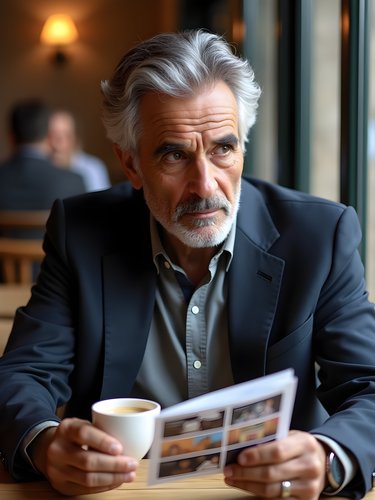
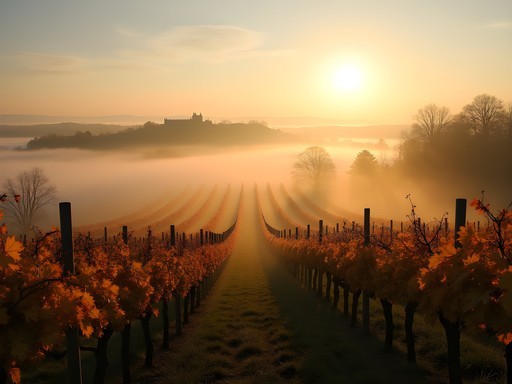











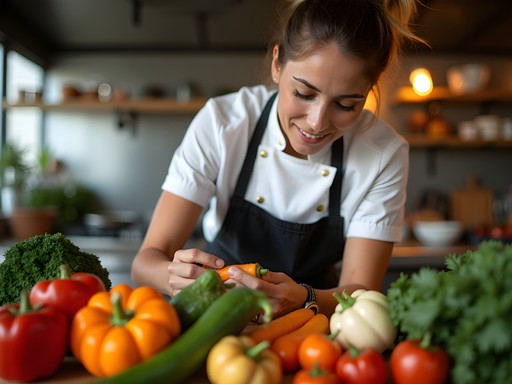

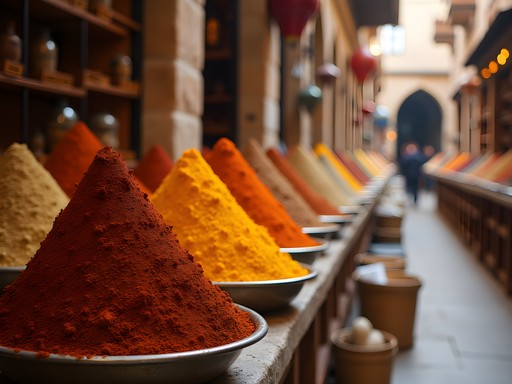
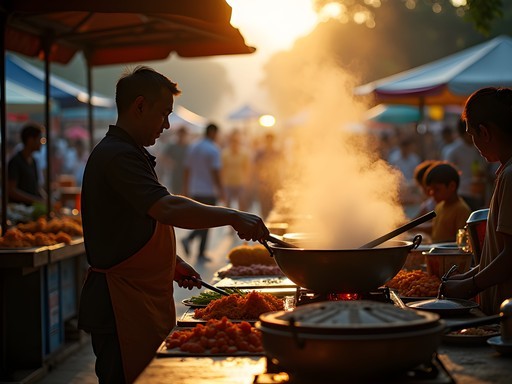
Comments
Claire Hawkins
Noah, your description of Saint-Émilion took me right back to our family trip there last summer! We stayed in a little stone cottage just outside the village and would walk to the square every morning for fresh pastries. My husband and I took turns with wine tastings while the other explored with our 8-year-old. Surprisingly family-friendly region! The underground church in Saint-Émilion fascinated our daughter, and many châteaux have beautiful grounds where kids can run around while parents sample wines. We even found one (Château de Ferrand) with a special grape juice tasting for children while parents did wine tastings. Your section on the Right Bank wines was spot on - those velvety Merlot blends are still my husband's favorites. Beautiful writing that captures the essence of the region!
wildnomad
This post inspired me to dig out my notes from my Bordeaux trip two years ago! I'd add Château Siaurac to your hidden gems list - family-owned place with gorgeous gardens where you can picnic after your tasting. One thing I wish I'd known before going: bring a good wine guidebook to help make sense of all the classifications and vintages. I used wine guide which was compact enough to carry around but detailed enough to be useful when deciding which bottles to bring home. Also found that many smaller châteaux offer shipping services which saved me from trying to cram bottles into my luggage!
travelmood
When would you say is the best time to visit? Is harvest season too busy?
Noah Duncan
Great question! I personally love early autumn (September/October) when the vines are golden and harvest activity is happening, but it can be busier. May-June is also beautiful with fewer crowds, and the châteaux are less busy so you might get more personalized attention during tastings.
dreamwalker
Just got back from Bordeaux last month and this post brings back such good memories! We actually discovered Château de Pressac by accident when our original tour was canceled. It ended up being the highlight of our trip - the owner gave us a personal tour and we tasted wine straight from the barrel. One tip I'd add: the wine museum La Cité du Vin in Bordeaux city is worth a visit on a rainy day. Not as atmospheric as the vineyards but we learned so much about wine production globally, not just in Bordeaux. And the tasting room at the top has amazing city views!
wintermate
OMG I'M GOING TO BORDEAUX FOR MY HONEYMOON NEXT SPRING AND I'M SOOOOO EXCITED!!! Saving this post!!!! 🍷🍷🍷
Claire Hawkins
Congrats on the wedding! Bordeaux is incredibly romantic - make sure to book a sunset tasting at one of the châteaux with vineyard views. Perfect honeymoon memory!
Hunter Thompson
Mate, this guide is EXACTLY what I needed! Heading to Bordeaux next month and was feeling overwhelmed by all the château options. Your breakdown of Left Bank vs Right Bank actually makes sense of the region for me. I did a DIY wine tour in Tuscany last year but Bordeaux seemed more intimidating somehow. Definitely going to check out some of those hidden cellars you mentioned - Château Peymouton sounds right up my alley! Did you rent a car or use the wine shuttle buses between vineyards?
Noah Duncan
Thanks Hunter! I actually mixed it up - rented a car for exploring the more remote estates but used the Vinotour shuttle service for days when I planned to indulge more in tastings. Definitely recommend booking the smaller châteaux in advance - they often have more personal tours.
Hunter Thompson
Brilliant, cheers for the tip! Will look into Vinotour.
dreammate
Those Saint-Émilion photos are absolutely stunning! Making me thirsty just looking at them.
starfan
Anyone done the harvest season tours? Thinking of going next September!
blueguy
Did it in 2023. Amazing experience but book WAY ahead - everything fills up. Some châteaux even let visitors help with grape sorting if you ask nicely!
explorelife
Noah, loved your section on hidden cellars! We discovered Château Jean Faure (right next to Cheval Blanc but a fraction of the price) and their organic wines were incredible. Also recommend the wine bars in Bordeaux city for evening tastings - Bar à Vin CIVB has incredible selection with glasses starting at €2-4. Perfect way to sample many appellations without driving to each one!
Frank Garcia
Just got back from Bordeaux last month and did it on a backpacker's budget! For those without deep pockets, I found that many smaller châteaux offer tours+tastings for €10-15. The Maison du Vin in Saint-Émilion offers tastings from multiple producers without committing to full tours. Transport tip: there's actually a local train connecting Bordeaux to Saint-Émilion for about €9 round trip - way cheaper than tours or taxis. I used my pocket wine guide constantly to navigate the overwhelming options. The Right Bank was more accessible for walk-ins and budget travelers in my experience. Anyone else try the canelés while there? Addictive little pastries!
redexplorer
Thanks for the train tip! Was it easy to get around Saint-Émilion without a car?
Frank Garcia
The town itself is tiny and walkable. Several châteaux are within 1-2km of the center. For anything further, I joined with other travelers to share taxi costs. There's also a tourist office that can arrange half-day minibus tours to 2-3 vineyards for about €45.
Venture X
Premium card with 2X miles, $300 travel credit, Priority Pass